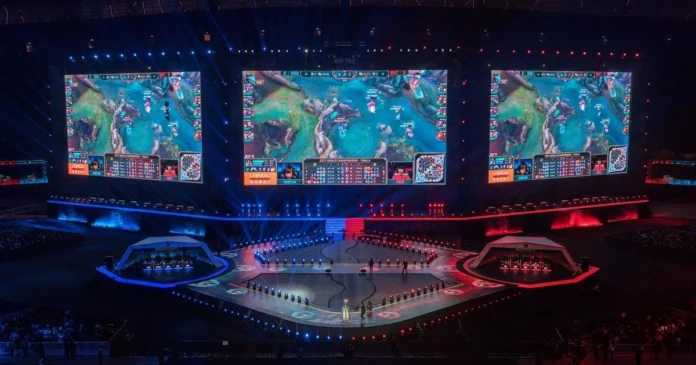Players swarming to join the ranks of digital fighters have the Indian eSports industry ablaze. The appeal of cross-border events increases along with the size of this virtual battlefield. Players from all around the world get together for these international events to duke it out in famous games by odds96 and other fan favourites. The excitement of facing off against foreign opponents has evolved as the main lure for Indian players and fans.
eSports’s ascent in India
But whence did we arrive here? Not too long ago, it was ridiculous in India to consider earning money from video game playing. Parents would reprimand their children for “wasting time” playing computer games. Fast forward to now and sentiments are changing dramatically. The rise of eSports in India is not merely a fortunate mishap. Rising internet connectivity, less expensive technology, and a young populace raised with cell phones in hand create the ideal storm.
Think about it: India boasts over 500 million internet users, and that count is rising more quickly than you could possibly “Google it.” Combine that with a growing market for reasonably priced PCs and cell phones to create digital supremacy. Still, it’s not only about possessing the instruments. It concerns the attitude. Young people of India are tech-savvy, aspirational, and more conscious of the fact that eSports is a real career path rather than only a hobby.
Popular Games and the eSports Ecosystem
Let us then discuss gaming now. What is igniting the passion of Indian players? The indisputable king until it acquired the boot was PUBG Mobile. Still, its resurrection as Battlegrounds Mobile India is bearing the flame. After that you have Free Fire, Counter-Strike: Global Offense (CS: GO), Dota 2, and FIFA. These are virtual arenas where millions of players and viewers gather to create the backbone of India’s eSports system, not only games.
The Value of International Events
Cross-border competitions, though, are when it becomes truly fascinating. For the Indian eSports scene, these foreign face-offs serve as rocket fuel. They’re about more than just getting prizes — though that’s a great bonus. They are about stretching limits, both national and personal. Not only are Indian sportsmen playing a game when they square up against foreign hotshots. They are emissaries, bearing on their virtual shoulders the hopes and dreams of a country.
These events serve as a melting pot of knowledge, tactics, and cultures, abilities, too. Imagine an Indian team, raised on a jugaad (resourceful improvisation) and chai diet, against a methodical European squad or a lightning-fast Korean side. It’s not only about who has the most craftiness or fastest reactions. This is a collision of gaming cultures, a digital diplomatic conference where the global language is the love of the game.
Difficulties in the International Domain
Let me say, nevertheless, not sugar-coat it. There are obstacles on the path to worldwide eSports excellence. Problems with the Visa For many Indian gamers, they are the worst enemy they have. Missing a big event because some bureaucrat stamped the incorrect paperwork destroys the spirit rather than anything else. There is then the language barrier.
And avoid me starting on the technical challenges. Ever experimented with a Twitch-based shooter with a ping greater than your college admission test result? Not beautiful. In online qualifying, Indian players typically find themselves behind; their moves lag just enough to distinguish virtual life from death.
The experience difference is maybe the most invisible obstacle, though. Indian teams that travel internationally sometimes find opponents who have been playing at a top level for years. It’s like walking up for a gunfight carrying a can-do attitude and a sharp stick. Brave? True. Most likely will finish nicely. Not so much.
India eSports’s Future on the Global Scene
Looking ahead, cross-border gaming events in India have as bright potential as an RGB gaming keyboard. With the government at last acknowledging eSports as an official sport (took it long enough, right?), we should expect a rush of infrastructure and player development funds. This begs certain other issues, though: How will this flood of money and attention alter Indian eSports’s grassroots character? Will it preserve its scripts, and creative energy or result in a more professionalised business scene?
As India’s star grows in the eSports company, we will inevitably see more foreign event planners staring toward the subcontinent. Here’s a question, though: could India start hosting significant international events rather than only helping others? Imagine the top players in the world coming down to Mumbai or Bangalore for a major championship. Though the logistical difficulties would be great, so would the possible effects on India’s eSports ecology.
Not to overlook the players themselves either. We’re probably going to see local eSports heroes emerge as more Indian players become globally visible. Tremendous responsibility and pressure accompany tremendous popularity, though. These rising talents will manage the unexpected attention differently. Will they be cautionary stories of stardom gone wrong or role models for the next generation of gamers?
Summary
Cross-border gaming events are ultimately more than just an opportunity for Indian players to prove themselves on a global scene. They are a bridge between civilizations, a digital melting pot, and a testing ground for fresh ideas. These international events will be very important in forming not only the abilities of its players but also the very identity of Indian eSports as India keeps carving out its place on the worldwide stage.
Thus, keep in mind that you’re not only seeing a game the next time you witness an Indian squad in an international eSports event. You are seeing a diplomatic mission, a cultural interaction, and maybe the beginning of India’s next outstanding sports narrative.=







